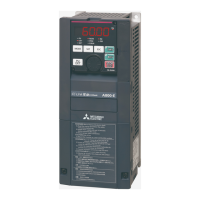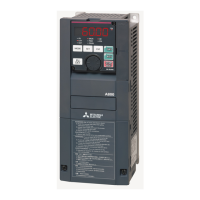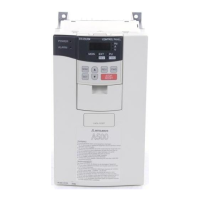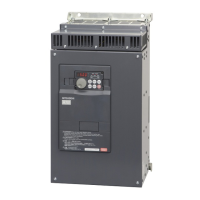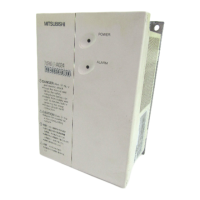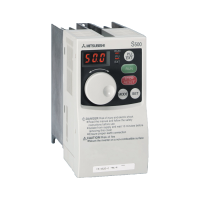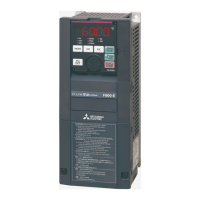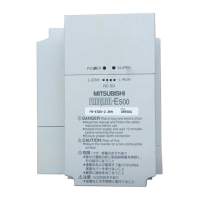(E) Environment setting parameters
278
PARAMETERS
PWM carrier frequency automatic reduction function (Pr.260)
• Setting Pr.260="1 (initial value)" will enable the PWM carrier frequency auto-reduction function. If a heavy load is
continuously applied while the inverter carrier frequency is set to 3 kHz or higher (Pr.72 "3"), the carrier frequency is
automatically reduced to prevent occurrence of the inverter overload trip (electronic thermal O/L relay function) (E.THT).
The carrier frequency is reduced to as low as 2 kHz. (Motor noise increases, but not to the point of failure.)
• With the LD and SLD ratings (Pr.570 Multiple rating setting="0 or 1"), the auto-reduction function is activated for a
continuous operation with the 85% or higher rated inverter current.
• With the ND and HD ratings (Pr.570="2 or 3"), the auto-reduction function is activated for a continuous operation with the
150% or higher rated inverter current.
• When continuous operation with FR-A840-03250(110K) or higher is performed at 85% of the rated inverter current or
higher, the automatic reduction function is activated regardless of the Pr.570 setting.
• When Pr.260="0", the carrier frequency becomes constant (Pr.72 setting) regardless of the load, making the motor sound
uniform. However, when the SLD rating is selected, (Pr.570="0"), the operation is the same as Pr.260="1".
NOTE
• Reducing the PWM carrier frequency is effective as a countermeasure against EMI from the inverter or for reducing leakage
current, but doing so increases the motor noise.
• When the PWM carrier frequency is set to 1 kHz or lower (Pr.72 1), the increase in the harmonic current causes the fast-
response current limit to activate before the stall prevention operation, which may result in torque shortage. In this case,
disable the fast-response current limit in Pr.156 Stall prevention operation selection.
• The lower limit of carrier frequency after the reduction under PM sensorless vector control (low-speed range high-torque
characteristic enabled) is 6 kHz.
• During fast-response operation, the carrier frequency automatic reduction function is disabled.
Pr.156 Stall prevention operation selection page 348
Pr.570 Multiple rating setting page 265
Pr.788 Low speed range torque characteristic selection page 176
Pr.800 Control method selection page 164
5.7.18 Inverter parts life display
The setting range (reading only) for separated converter types is "0, 1, 4, or 5". The setting range (reading only) for IP55 compatible modes is "0
to 31".
The setting is available only for standard models and IP55 compatible models.
The degree of deterioration of the control circuit capacitor, main circuit capacitor, cooling fan, and inrush current limit
circuit can be diagnosed on the monitor.
When a part approaches the end of its life, an alarm can be output by self diagnosis to prevent a fault.
(Note that the life diagnosis of this function should be used as a guideline only, because with the exception of the main
circuit capacitor, the life values are theoretical calculations.)
Pr. Name
Initial
value
Setting
range
Description
255
E700
Life alarm status display
0 (0 to 15)
Displays whether or not the parts of the control
circuit capacitor, main circuit capacitor, cooling
fan, and inrush current limit circuit have reached
the life alarm output level. Read-only.
256
E701
Inrush current limit circuit life
display
100% (0 to 100%)
Displays the deterioration degree of the inrush
current limit circuit. Read-only.
257
E702
Control circuit capacitor life
display
100% (0 to 100%)
Displays the deterioration degree of the control
circuit capacitor. Read-only.
258
E703
Main circuit capacitor life
display
100% (0 to 100%)
Displays the deterioration degree of the main
circuit capacitor. Read-only.
The value measured by Pr.259 is displayed.
259
E704
Main circuit capacitor life
measuring
0
0, 1
(2, 3, 8, 9)
Setting "1" and turning the power supply OFF
starts the mea
surement of the main circuit capacitor life.
If the setting value of Pr.259 becomes "3" after
turning the power supply ON again, it means that
the measurement is completed. The deterioration
degree is read to Pr.258.
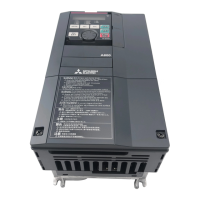
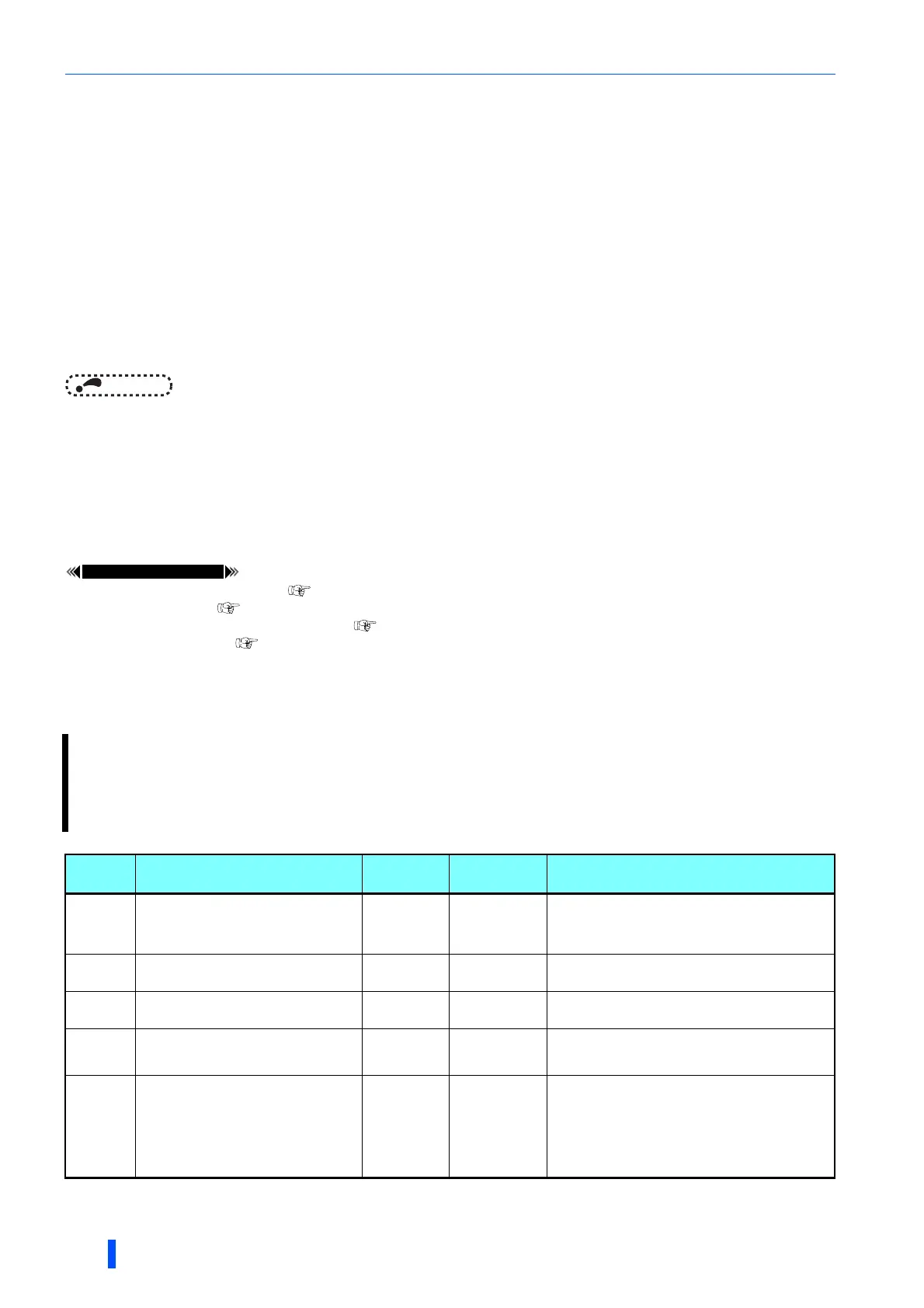